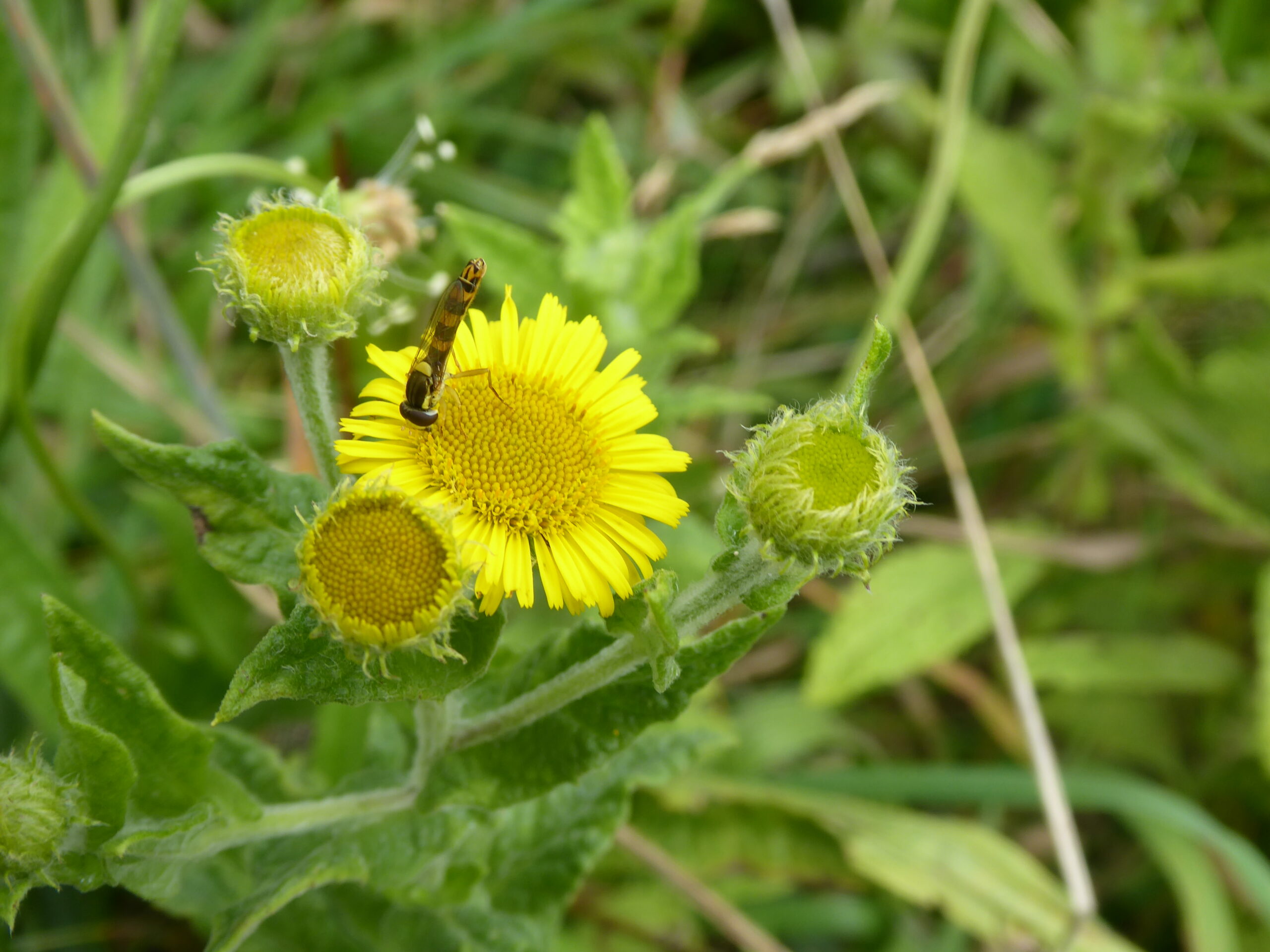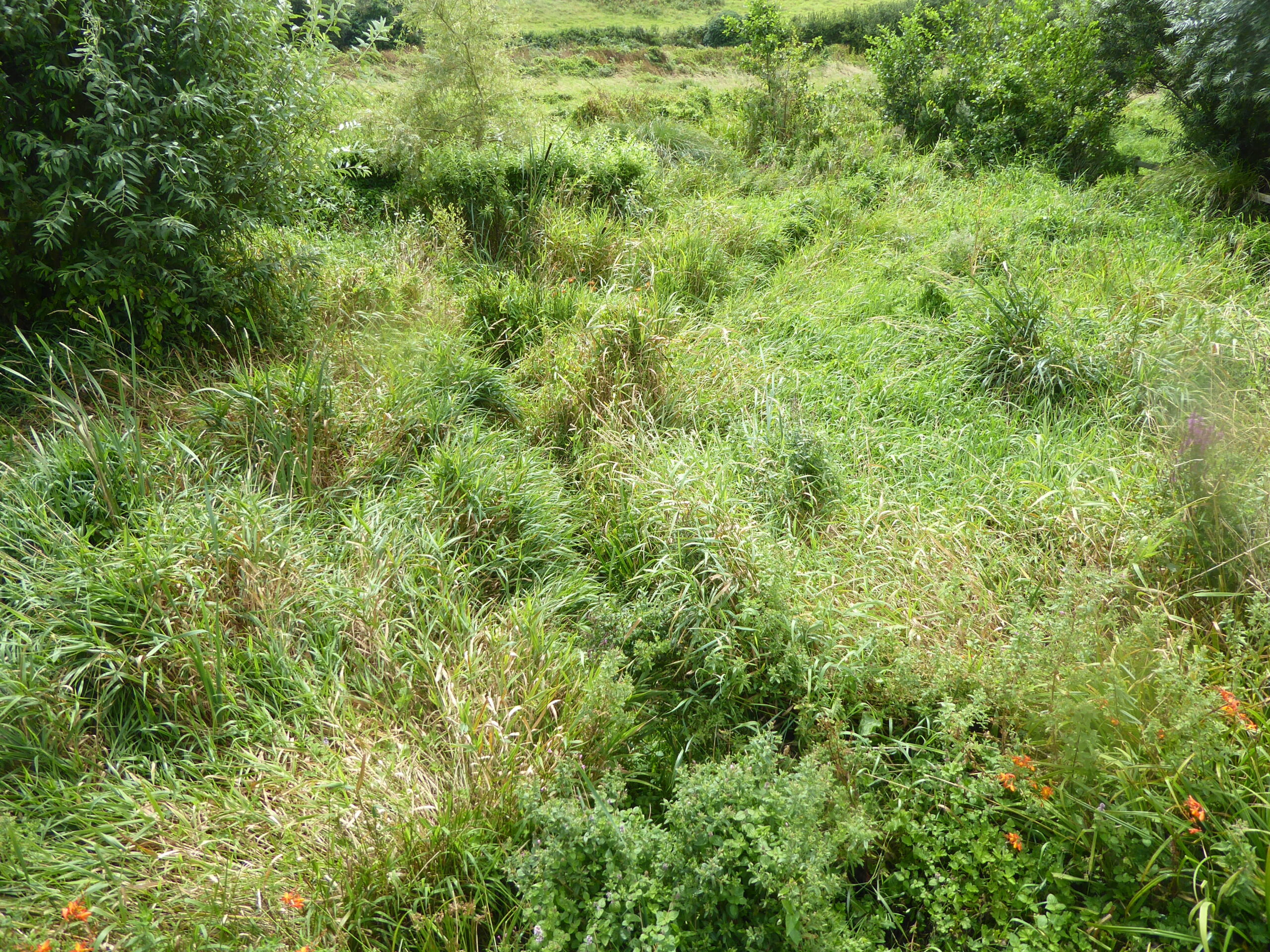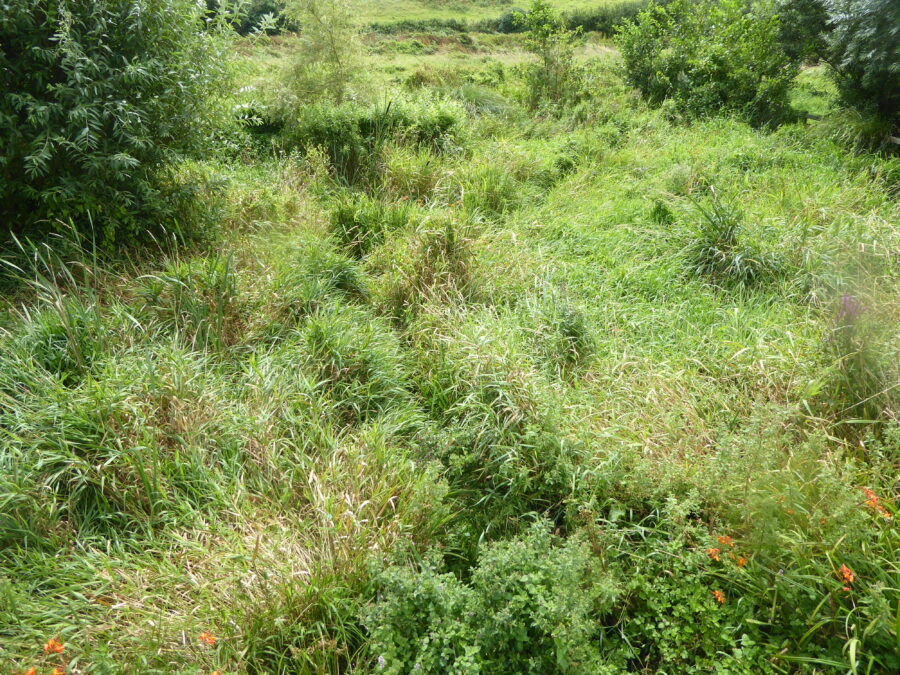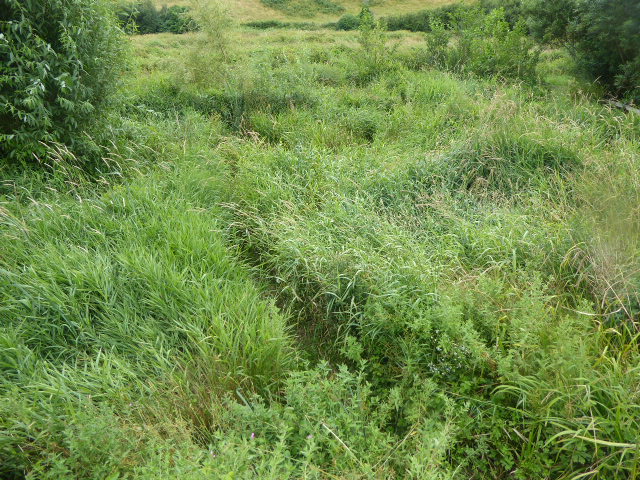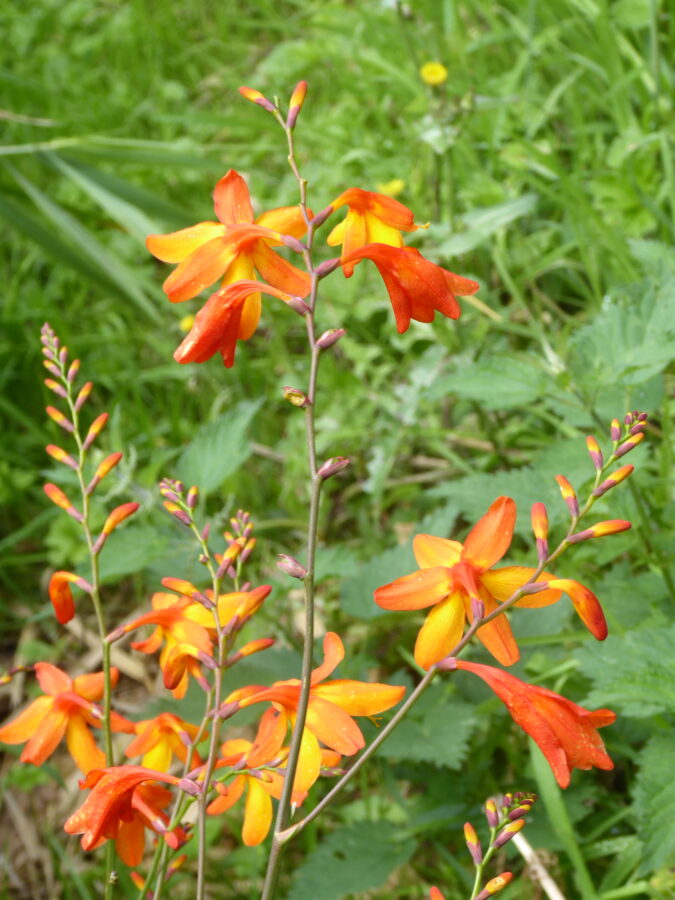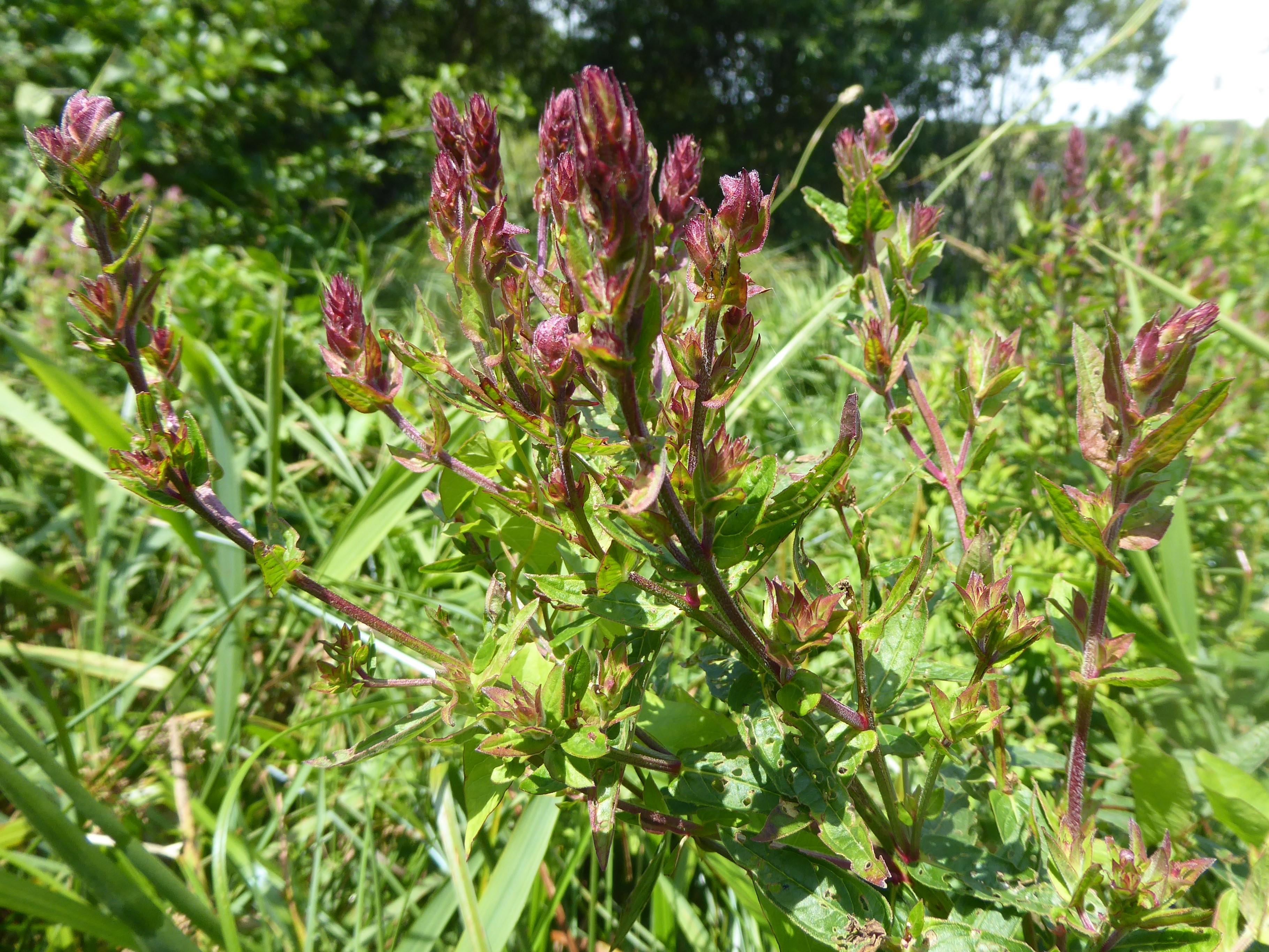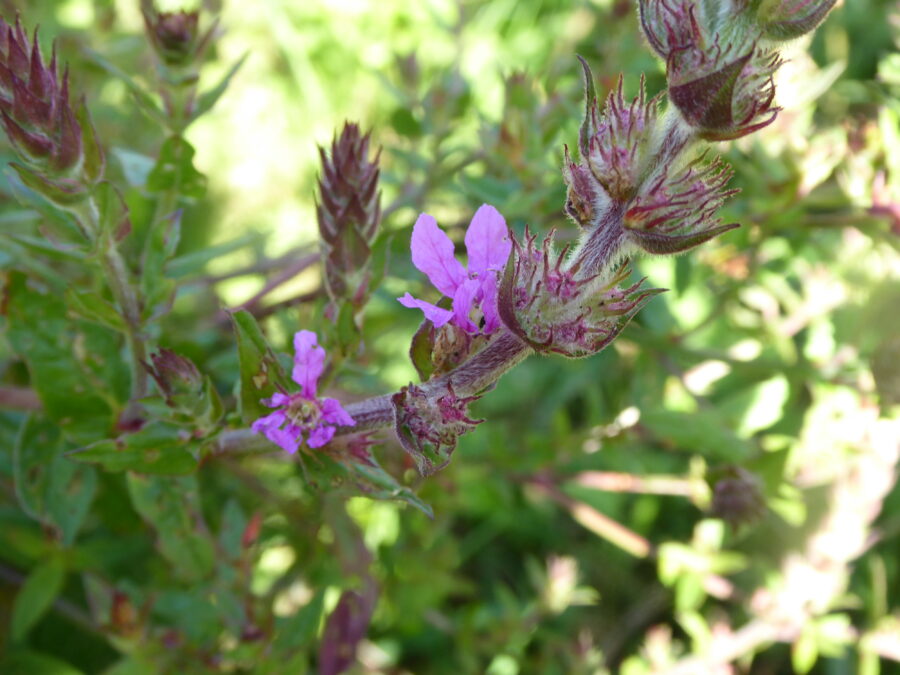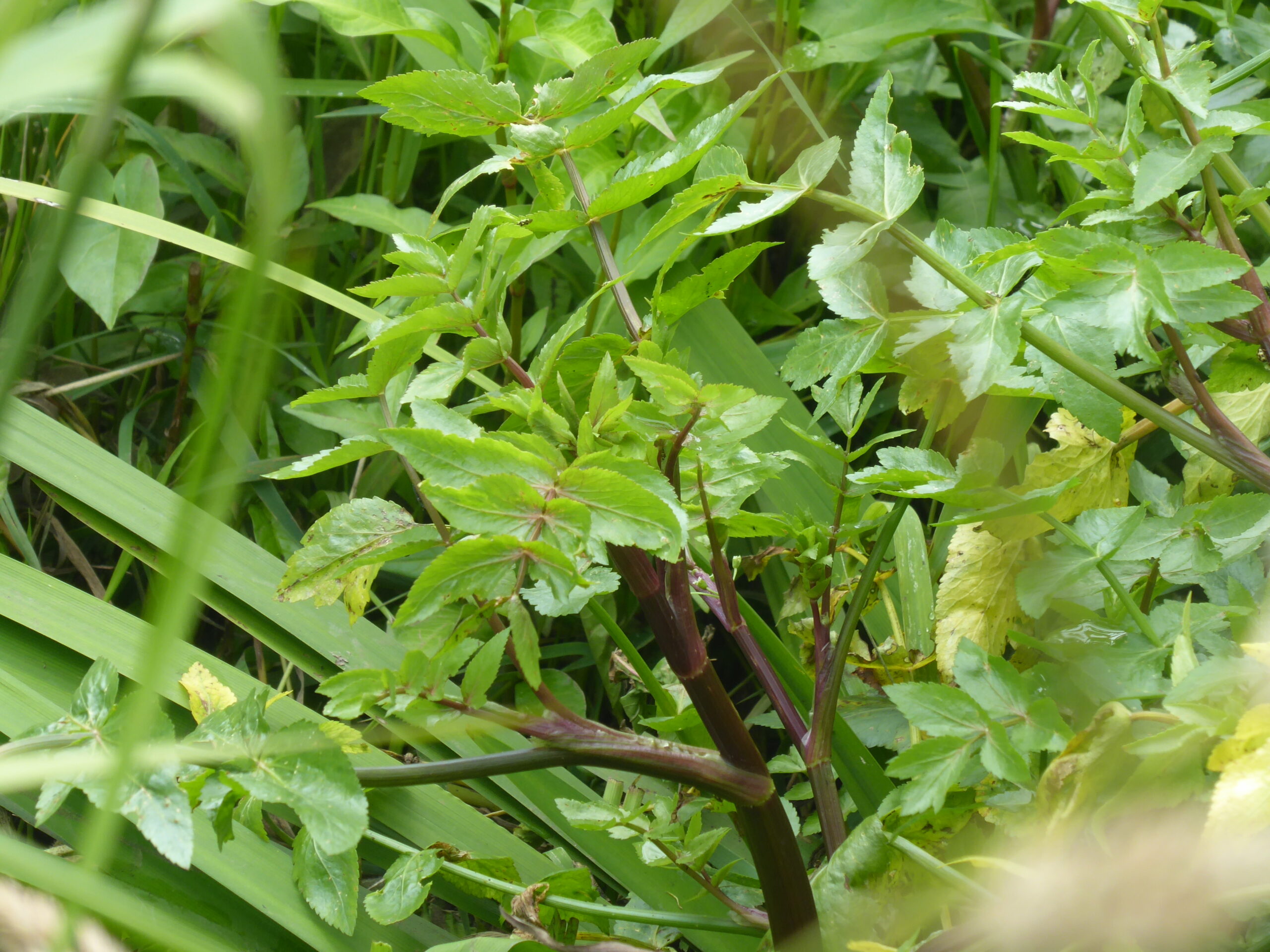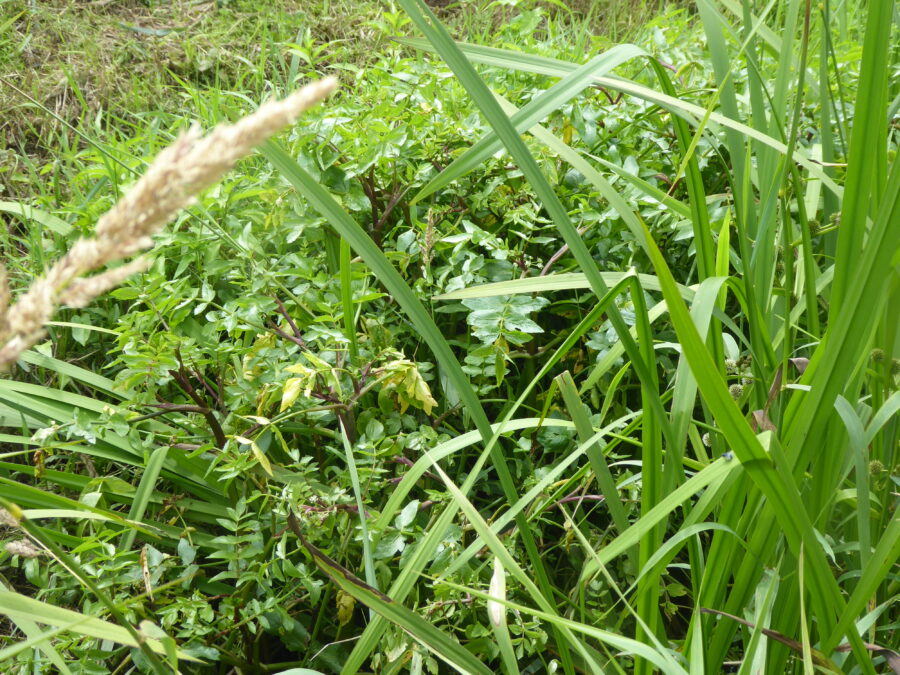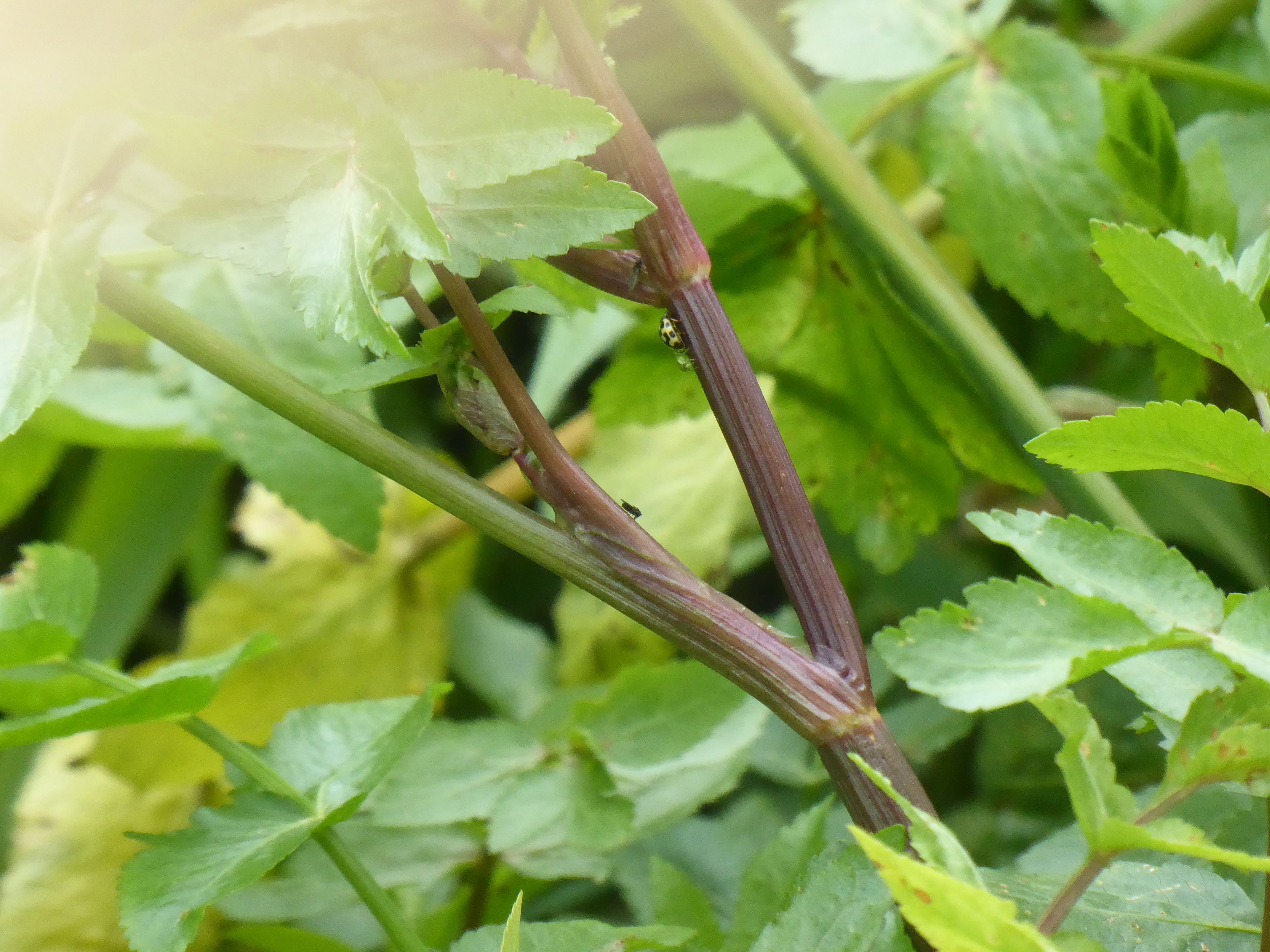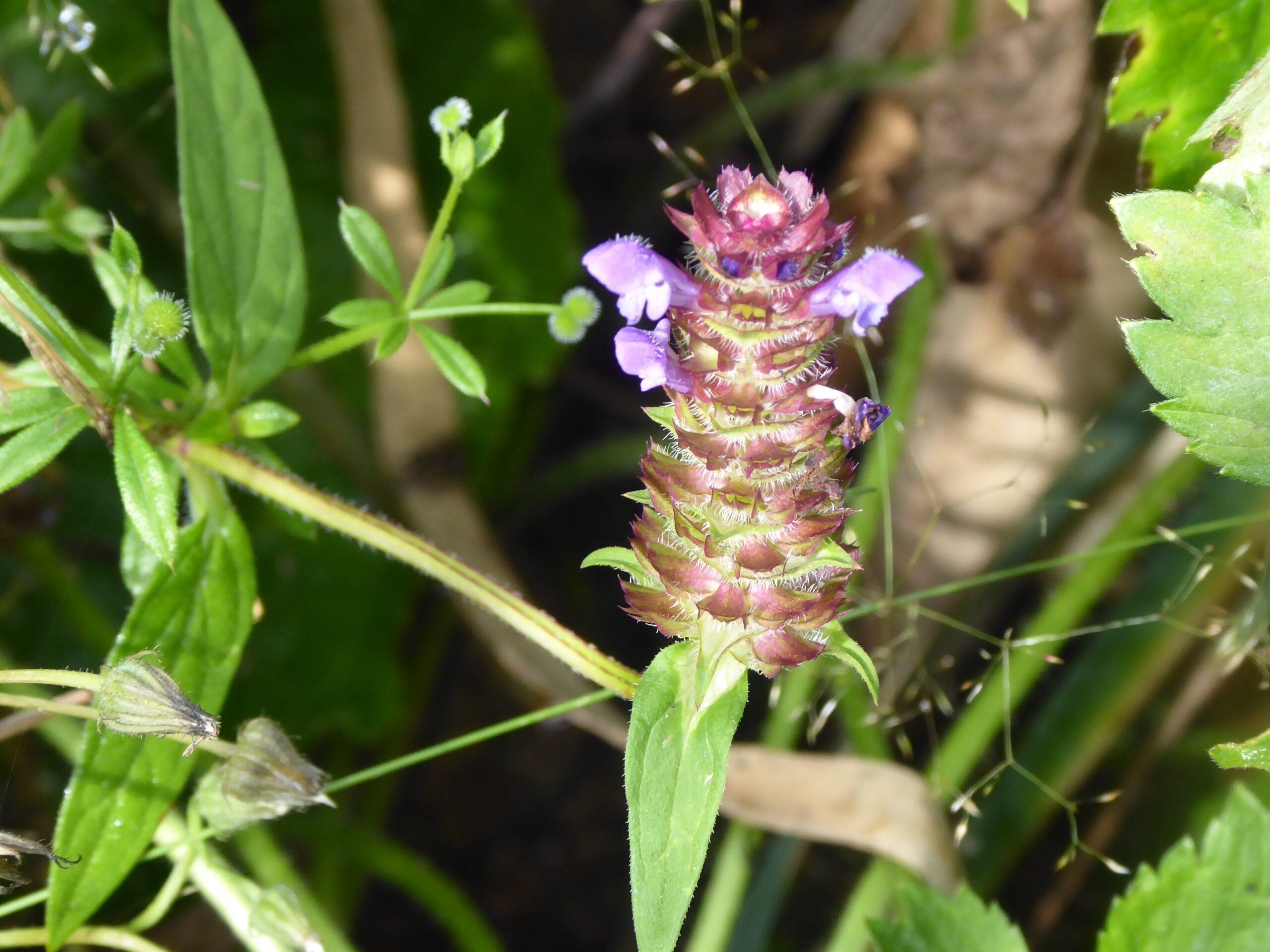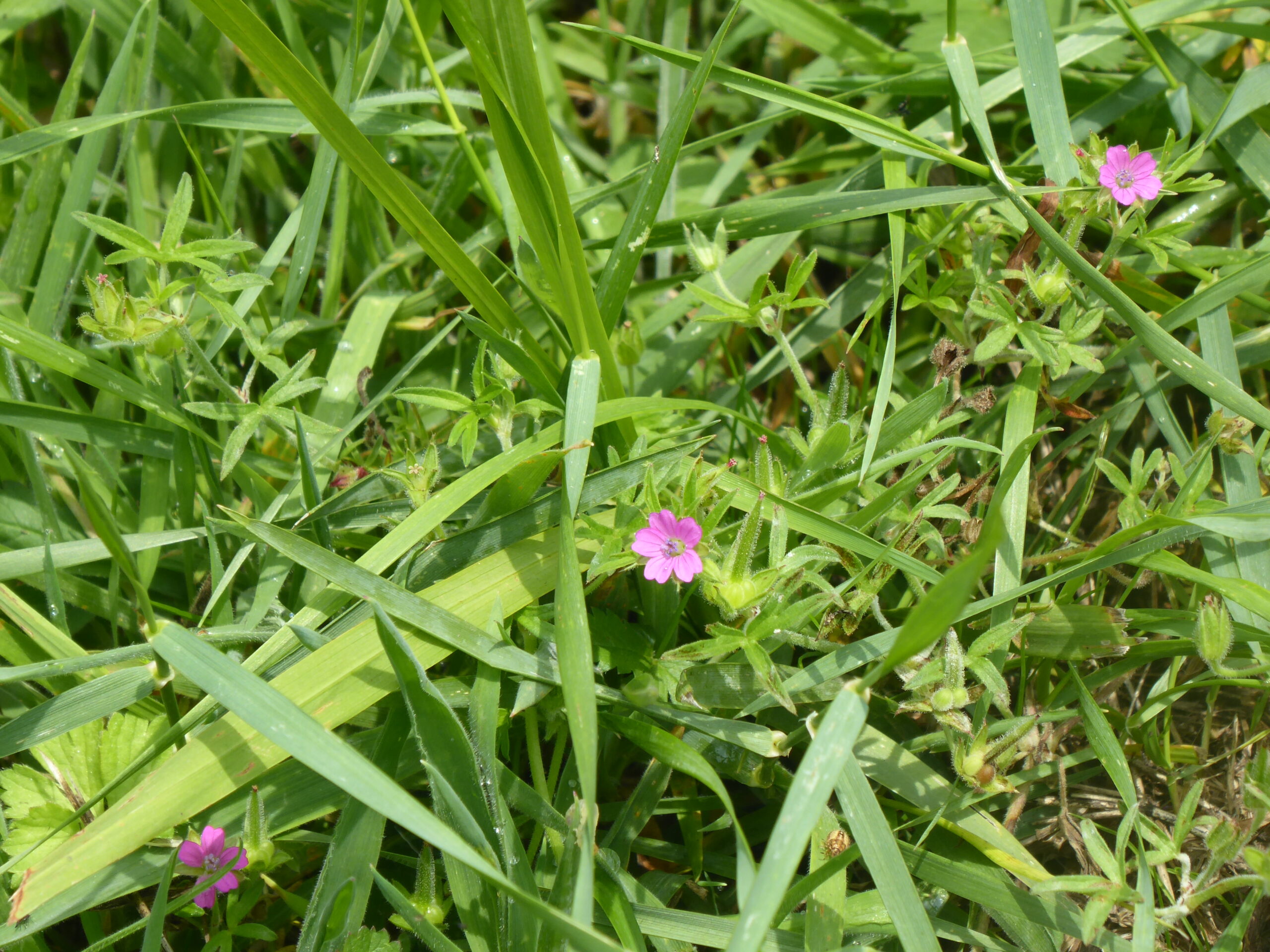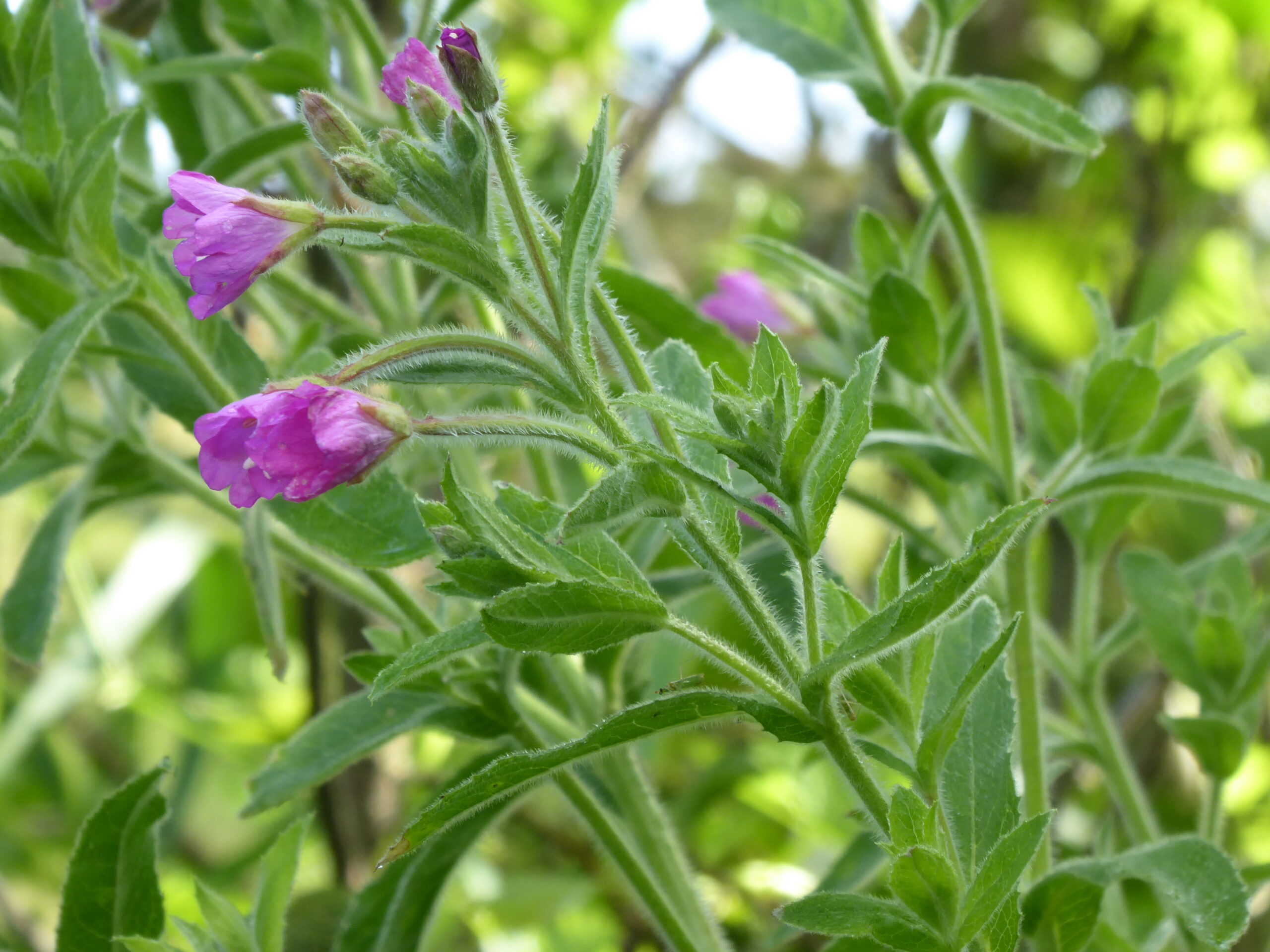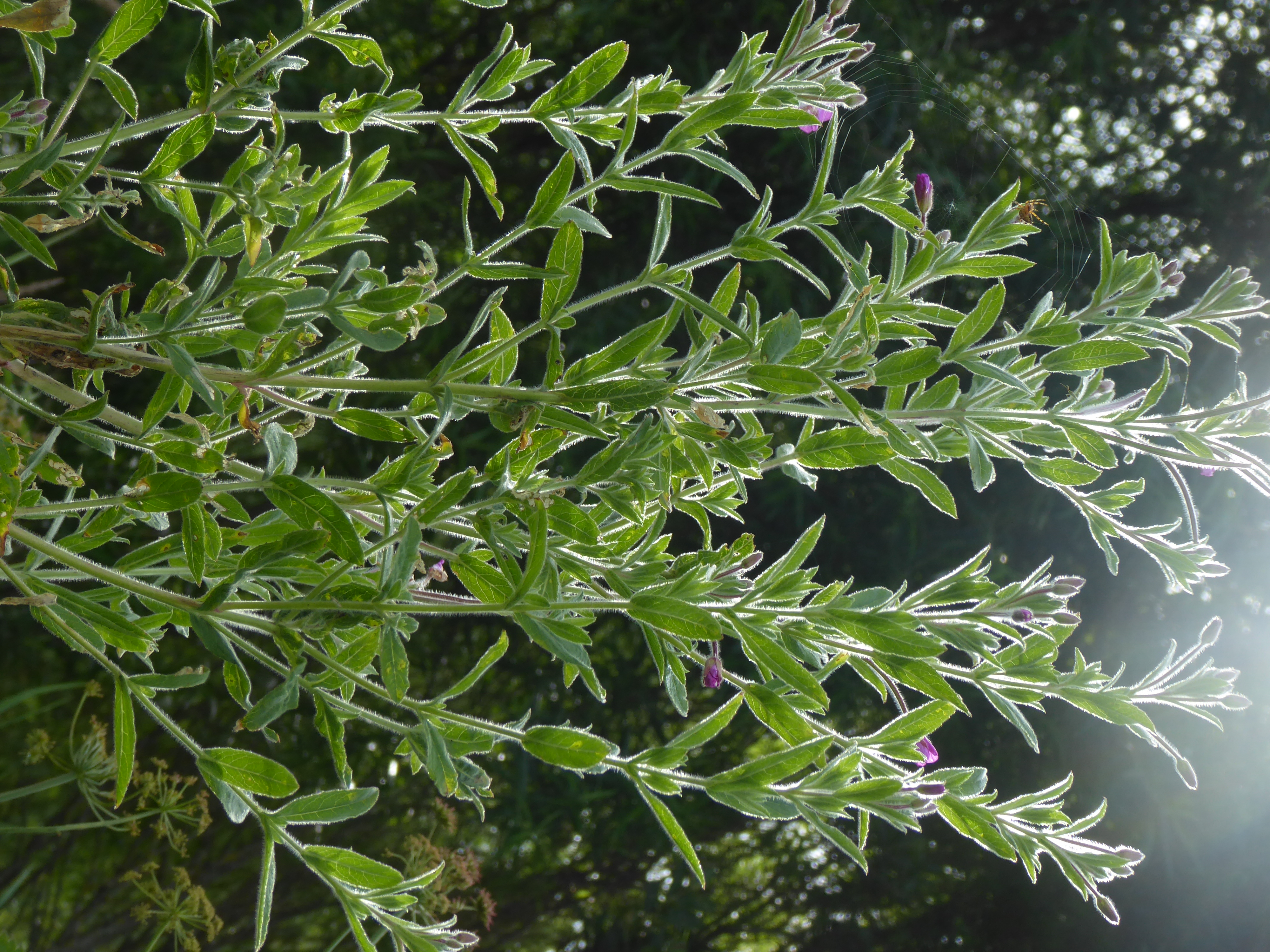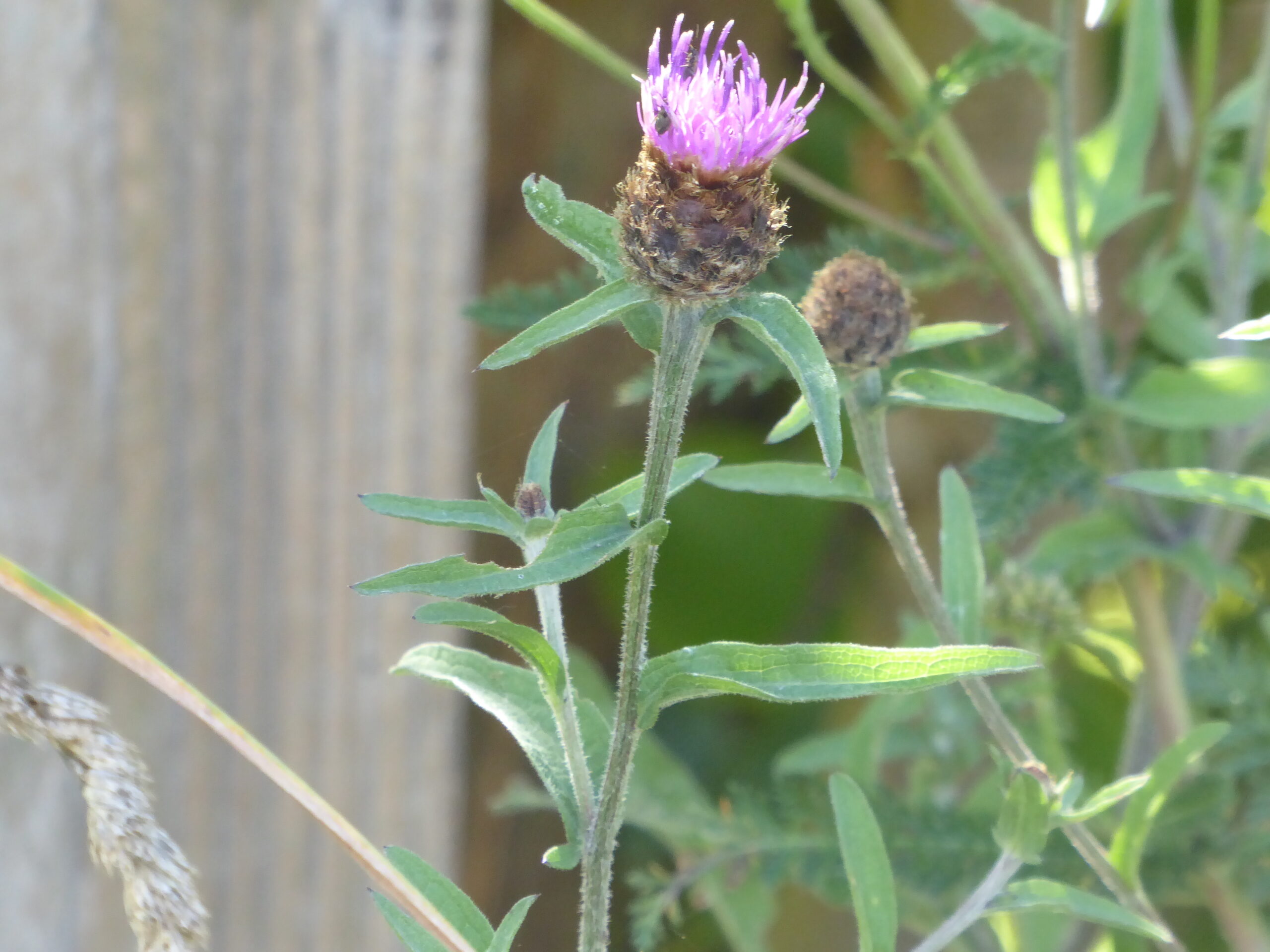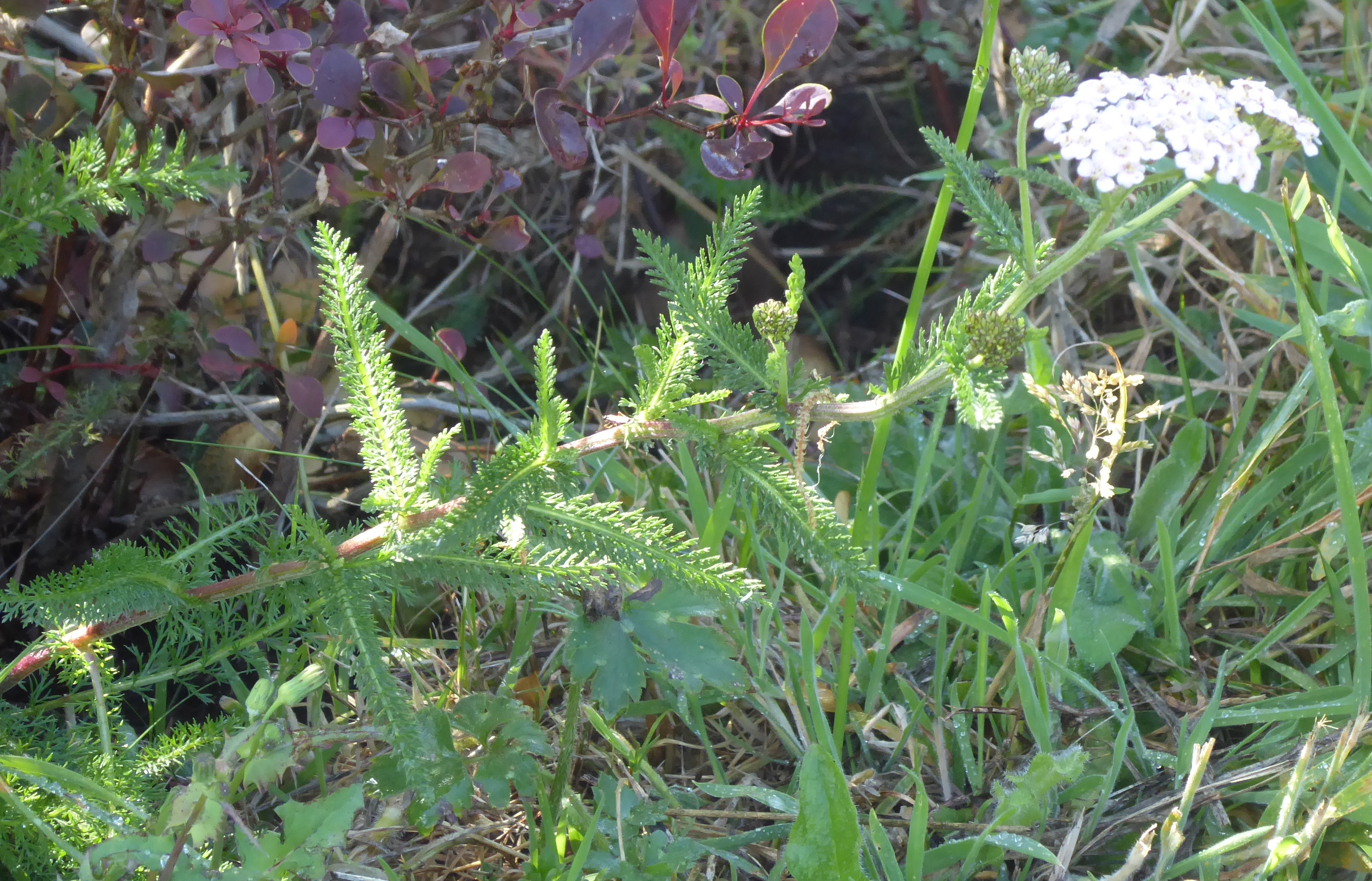We had clumps of yellow flowers in both the top garden and in the watermeadow. The ones in the top garden turned out to be ragwort, but these (above) are common fleabane. They both have bright yellow daisy-style flowers, but the leaves are quite different. Ragwort has intricate leaves and fleabane has regular ‘leaf-shaped’ leaves, long and pointed and corrugated.
The other difference is the occupants of the plants. Ragwort, which is poisonous to animals, is host to the striking looking caterpillars of the cinnabar moth. If you see a tall, yellow daisy with complicated leaves look for black and yellow striped caterpillars climbing over it. They are an amazing sight!
Our common fleabane, on the other hand, seemed to be a buffet for hoverflies. Long hoverflies. Long hoverflies have a distinctive elongated tubular body-shape. Their body is longer than their wings. Their eyes are reddish brown and their stripes are fairly regular and slightly m-shaped.
Yesterday, I was walking round the garden thinking that it was mild and muggy, but too damp and dull to see anything much. How wrong I was! There were snails, wasps, damselflies, hoverflies, and many small bugs, as well as more butterflies than I was expecting. I was chasing a few things round the garden.
Now I’m getting to the stage where I think “Oh, I’ve got that one!”. I may have missed a brown butterfly or two thinking that they were Meadow Browns, but it’s difficult to tell when they have their wings folded up. Do I wait patiently or go in search of something else?
And another thing – I was mowing the lawn yesterday, before I went down to the watermeadow, and I found myself not only steering round a baby toad but picking blades of grass with ladybirds on to move them out of the way.
